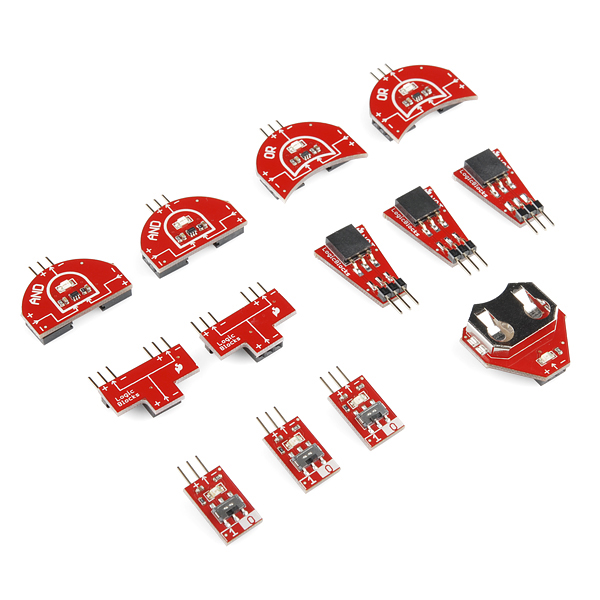LogicBlocks & Digital Logic Introduction
Introduction
Get up close and personal with the driving force behind the world of digital electronics - digital logic! The LogicBlocks kit is your ticket to discovering digital logic, visualizing how it works, and exploring what it can create.
SparkFun LogicBlocks Kit
KIT-11006This tutorial is a continuation of the LogicBlocks Kit Information booklet, which is included with the kit, but we'll regurgitate some of the information in that booklet here. If you've already familiarized yourself with the LogicBlocks kit, I'd encourage you to skip parts 1-3, and head straight down to the experiments in part 4.
Covered In This Tutorial
This tutorial aims to familiarize you with both digital logic and the LogicBlocks. It's split into the following sections:
- What is Digital Logic?
- LogicBlocks Fundamentals
- The Blocks In-Depth
A second tutorial, the Logic Blocks Experiment Guide, follows this tutorial and houses all of the experiments we've concocted with LogicBlocks.
Suggested Reading
Before delving into the LogicBlocks, we recommend reading through these tutorials first:
- Analog vs. Digital -- This tutorial explores the difference between analog and digital signals. Important, since we'll be doing a lot of talking about digital logic.
- Digital Logic -- If you want to go more in-depth into digital logic theory, check out this tutorial.
- Binary -- Binary is the language of computers. Digital logic is a tool we can use to add and store binary numbers.
